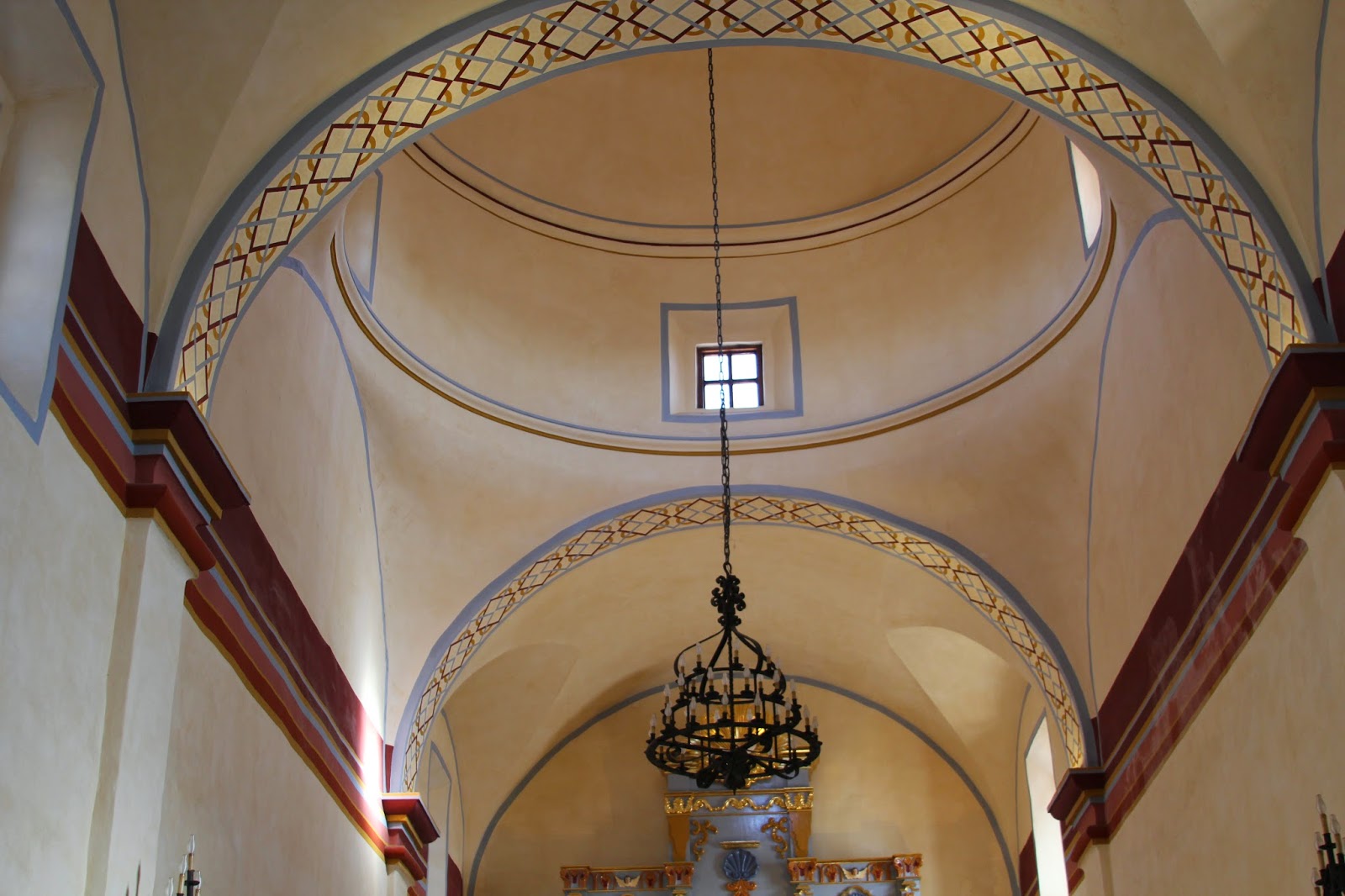Mission San Jose y San Miguel de Aguayo, was called Mission San Jose or "Queen of the Missions" because of its size and number of Indians living there. Father Margil de Jesus, a Franciscan missionary living in the Alamo, saw a need for a new mission. He requested permission from the governor of the Province of Coahulila and Texas to build a new mission in San Antonio. Permission was granted and they started building on February 23 1720.
 |
| The church is on the left and the guest quarters are on the right |
The church construction began in 1768 and at that time there were 350 Indians living in 84 two room apartments. The Friars jobs were to convert the Indians into Catholic, tax-paying subjects of the King of Spain. As in all the missions the Indians had many changes to entail, including changing their names and learning two languages, Latin and Spanish. Their lives in the mission also included church bells that called them to worship three times a day. There were over 2000 Indians baptized in the 104 years that San Jose was a mission.
 |
| The Indian`s apartments |
On February 29, 1824 San Jose ceased to remain a mission. Complying with orders from the Mexican government, the mission was fully secularized. Father Diaz turned the mission over to the Indians that were living there and Chaplain Maynes. The mission was neglected and fell into ruins following the Benedictines, Redemptorists, and the Holy Cross Fathers ministering there. The Franciscans returned in 1931 and are still there currently.
 |
| The side of the church with the Rose Window |
The chapel in the Mission is very ornate and there is gold everywhere. The religious statues are beautiful and the ceiling is gorgeous. The beauty continues outside the enormous wood door with the carvings and architecture around the entrance.
 |
| The Chapel in Mission San Jose. |
 |
| The Alter up close. |
 |
| Ceiling in the Chapel. |
 |
| Carving around the Entrance to the Church |
There is a window on the side of the church called the Rose Window. They say it is a premier example of Spanish Colonial ornamentation in the US. They do not know who sculpted the window or why. The folklore about the window says that Pedro Huizar, a carpenter and surveyor from Spain, was waiting for his sweetheart, Rosa, to join him from Spain. On her journey Rosa was lost at sea. Pedro then carved the window as a declaration of his love. The more reasonable and less romantic theory is that it was named after the first saint of the New World, Saint Rosa of Lima. Personally, I am going with the love story.
 |
| Rose Window |
In the back of the Mission was a Grist Mill that was functioning in 1794 when the people of the mission were eating more than corn and wheat. The mill ran on the water from the irrigation system and aqueducts.
 |
| The Mill at Mission San Jose |
 |
| The water system that worked the mill |
This was my favorite of the missions. It was the largest, most intact, and it had a gift shop!





No comments:
Post a Comment